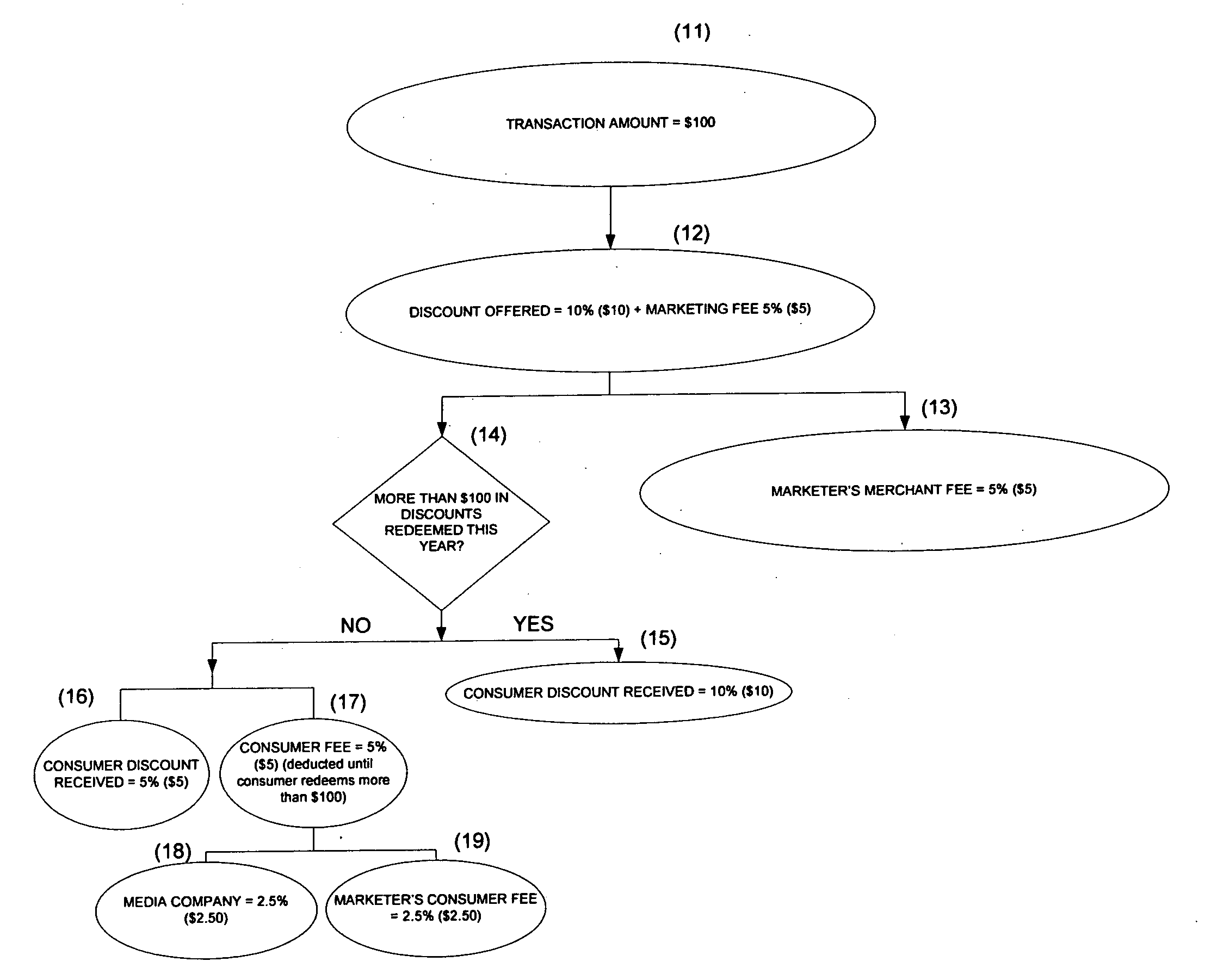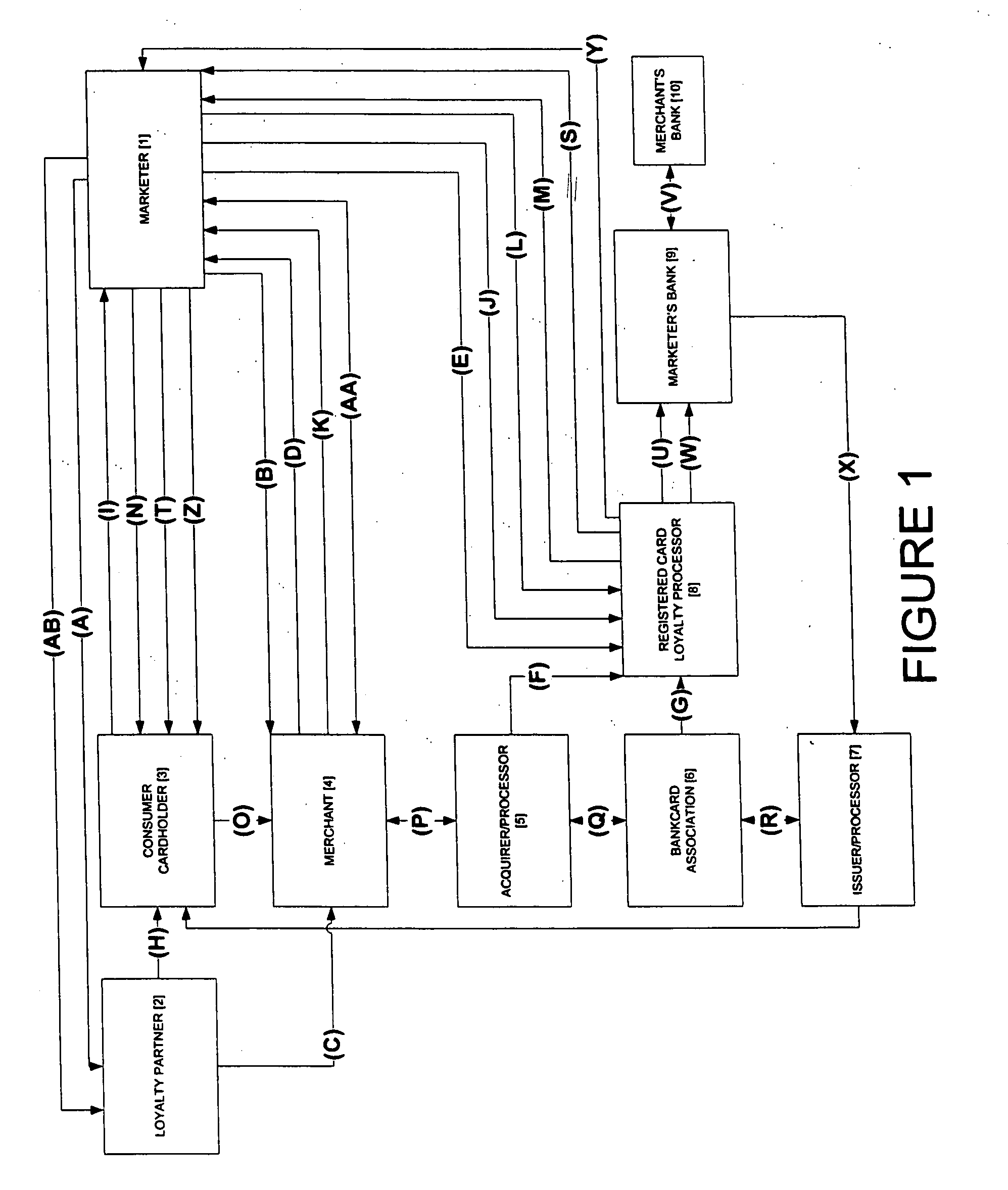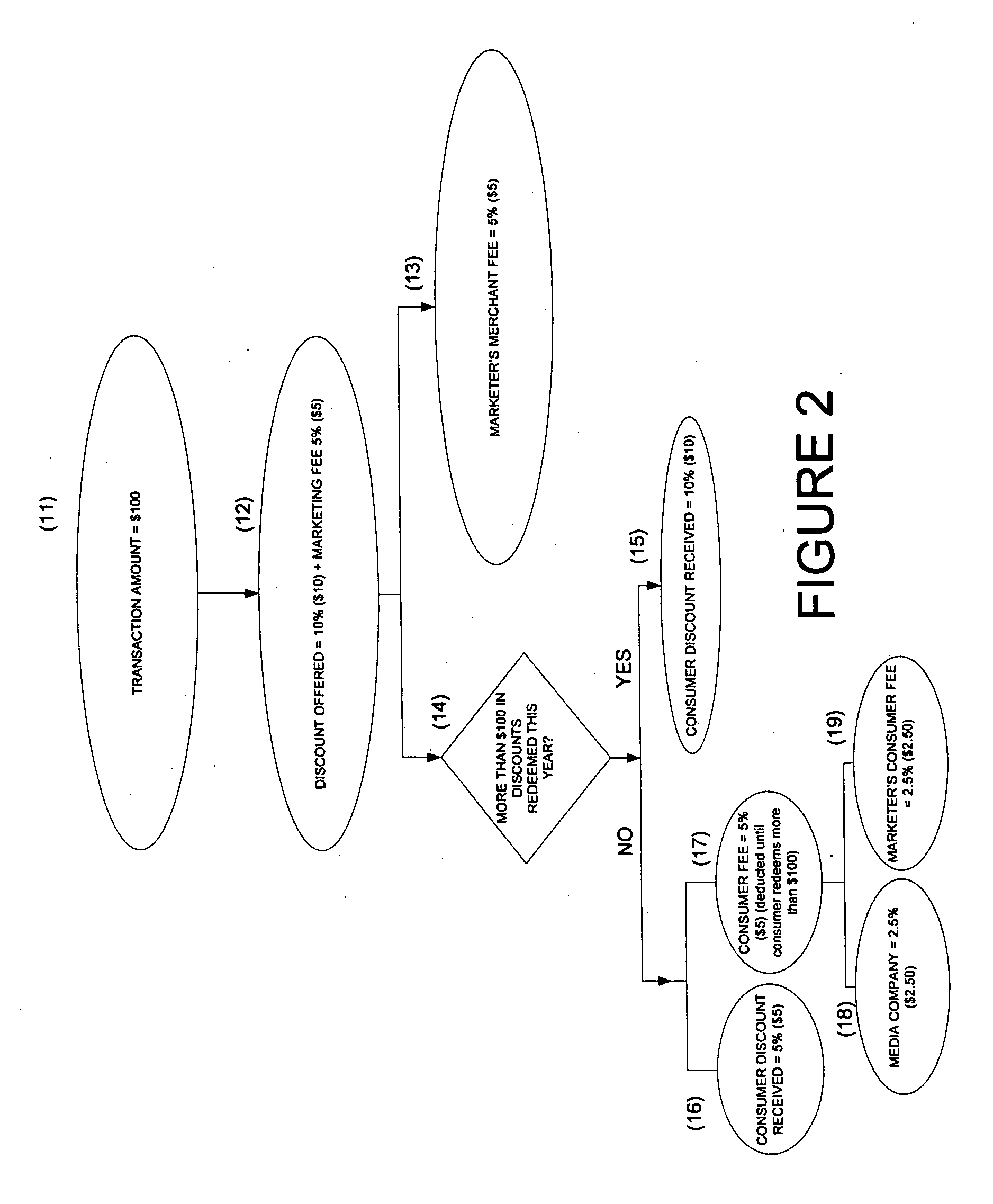Method and system for personalized promotional advertising via registered card technology
a registered card and promotional advertising technology, applied in the field of advertising and rewards programs, can solve the problems of requiring significant up-front cost for merchants, failing to teach a method to allow merchants, and failing to teach a method to allow consumers to specifically request merchant types
- Summary
- Abstract
- Description
- Claims
- Application Information
AI Technical Summary
Benefits of technology
Problems solved by technology
Method used
Image
Examples
Embodiment Construction
[0059]The following description of preferred embodiments is presented to describe the present invention and is not to be construed to limit the scope of the appended claims in any manner whatsoever. In FIGS. 1 and 4, for the sake of clarity, letters are used to designate steps and numbers are used to designate entities.
[0060]As best shown in FIG. 1, a marketer (1) approaches (A) potential loyalty partners (2), which can include media companies and not-for-profits as well as other affinity groups. A given loyalty partner (2) agrees to offer the marketer's reward program under their own brand. The marketer (1) and / or the loyalty partner (2) determine the most relevant merchants (4) for the consumer base (3). The marketer (1) and / or the loyalty partner (2) execute an independent or joint sales effort to sign up these merchants (4) (B, C). This joint sales effort (B, C) applies to one aspect of this invention pertaining to media companies and not-for-profits with advertising relationshi...
PUM
 Login to View More
Login to View More Abstract
Description
Claims
Application Information
 Login to View More
Login to View More - R&D
- Intellectual Property
- Life Sciences
- Materials
- Tech Scout
- Unparalleled Data Quality
- Higher Quality Content
- 60% Fewer Hallucinations
Browse by: Latest US Patents, China's latest patents, Technical Efficacy Thesaurus, Application Domain, Technology Topic, Popular Technical Reports.
© 2025 PatSnap. All rights reserved.Legal|Privacy policy|Modern Slavery Act Transparency Statement|Sitemap|About US| Contact US: help@patsnap.com



